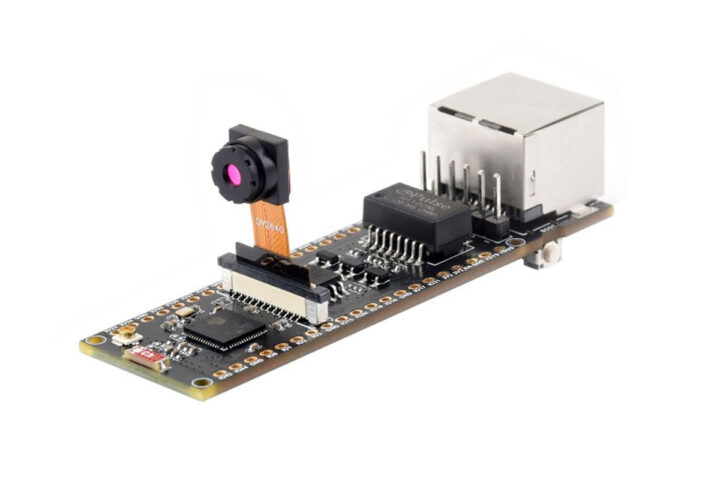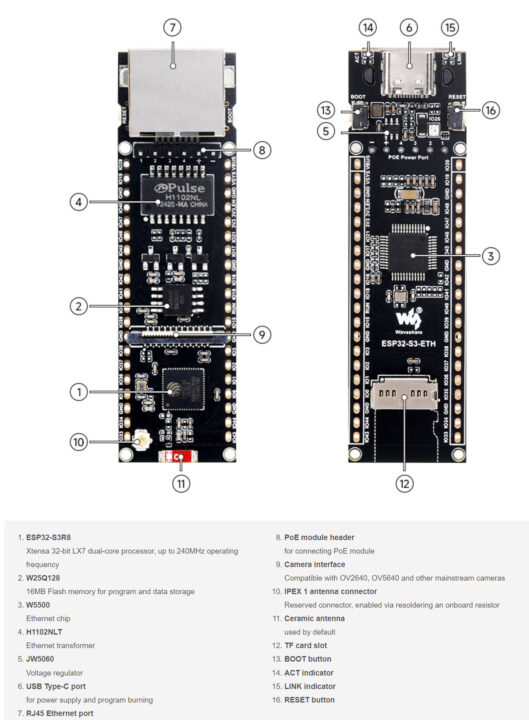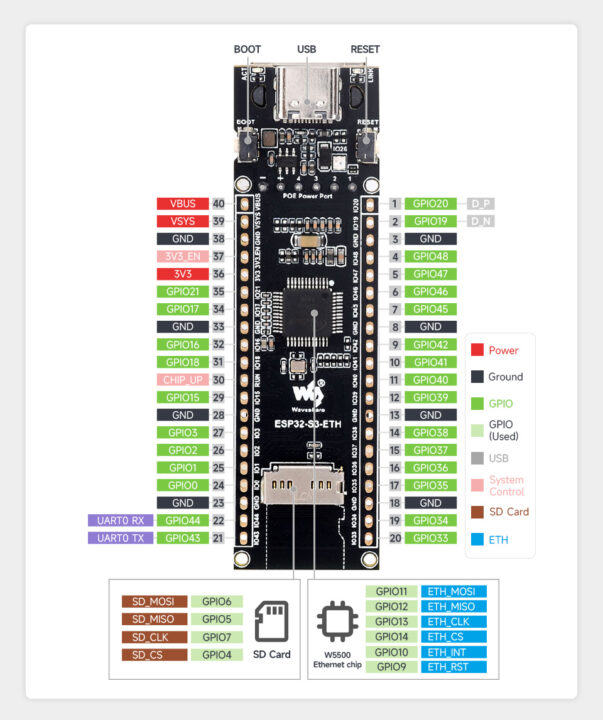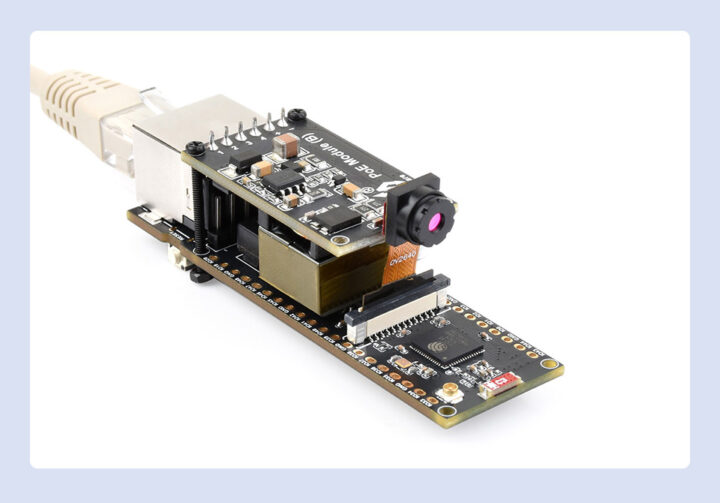Waveshare has recently launched the ESP32-S3-ETH development board with an Ethernet RJ45 jack, a camera interface, and compatibility with Raspberry Pi Pico HAT expansion boards. This board includes a microSD card interface and supports OV2640 and OV5640 camera modules. Additionally, it offers an optional Power over Ethernet (PoE) module, making it ideal for applications such as smart home projects, AI-enhanced computer vision, and image acquisition.
Previously, we have written about LILYGO T-ETH-Lite, an ESP32-S3 board with Ethernet and optional PoE support. We have also written about LuckFox Pico Pro and Pico Max, Rockchip RV1106-powered development boards with 10/100M Ethernet and camera support. The ESP32-S3-ETH board is like a combination of those two, where you get an ESP32-S3 microcontroller, Ethernet (with optional PoE), and a camera interface.
ESP32-S3 ETH development board specifications:
- Wireless module ESP32-S3R8
- MCU – ESP32-S3 dual-core LX7 microprocessor @ up to 240 MHz with Vector extension for machine learning
- Memory – 8MB PSRAM
- Storage – 16MB SPI flash
- Connectivity – WiFi 4 and Bluetooth 5 with LE/Mesh
- PCB antenna
- Storage – MicroSD card slot
- Camera I/F – FPC connector compatible with 2MP OV2640 or 5MP OV5640 camera modules
- Connectivity
- 802.11 b/g/n WiFi 4 up to 150 Mbps and Bluetooth 5 via ESP32-S3 SoC
- 10/100M Ethernet via Onboard W5500 Ethernet chip communication through SPI, optional PoE (IEEE 802.3af-compliant)
- USB – USB Type-C port for power and programming
- I/Os – 2x 20-pin headers with up to 27x GPIOs, 2x UART, 14x ADC, touch interface, Reset, 5V, 3.3V, GND
- Misc
- Boot & Reset button
- Power, Link, and Act LEDs
- Power Supply
- 5V via “5V-IN” pin
- 44 to 57V via optional PoE shield
- Dimensions – 72.8 x 21 mm
In terms of software, the company mentions that the dev board can be programmed with Arduino or ESP-IDF. More information about the product should eventually become available on the wiki, but it’s completely empty right now…
There are four variants of the board: the ESP32-S3-ETH (ETH development board only), the ESP32-S3-ETH-CAM-KIT (ETH development board + 2MP OV2640 camera), the ESP32-S3-POE-ETH (ETH development board + PoE module), and the ESP32-S3-POE-ETH-CAM-KIT (ETH development board + 2MP OV2640 camera + PoE module), all can be purchased from Amazon for $25.99~34.99. The development boards are also available on AliExpress, where the base model starts at $11.09, and the version with both PoE and Camera modules is priced at $22.35. Finally, all the versions can also be found on the Waveshare store with prices ranging from $16.99 to $24.99 before shipping.
Debashis Das is a technical content writer and embedded engineer with over five years of experience in the industry. With expertise in Embedded C, PCB Design, and SEO optimization, he effectively blends difficult technical topics with clear communication
Support CNX Software! Donate via cryptocurrencies, become a Patron on Patreon, or purchase goods on Amazon or Aliexpress









Now, the interesting question is, how are they dealing with the different power requirements of the OV2640 and the OV5640.
The OV2640 needs a core voltage of 1.3V (older datasheet revisions say 1.2V), while the OV5640 need 1.5V. The OV5640 has an internal regulator, but that should only be used with an IO voltage of 1.8V, not 2.8V (IO supplies the internal regulator), due to excessive heat (2.8V -> 1.5V, 125mA).
Also, according to the Omnivision reference schematic, the supply voltages should be LC-filtered. There does not seem to be any of those.
Sensor noise is the most prevalent problem of all the ESP32-S3-Cam boards.
Any code? Links to the project? Demos? Camera web server?
The wiki is up now. So the information is there.